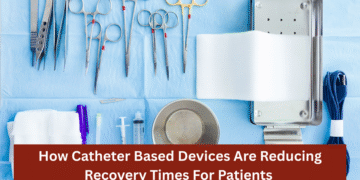In the transition from CMS HCC V24 to V28, compliance is no longer just about meeting coding requirements; it’s about embedding accurate documentation practices into every outpatient encounter. Outpatient CDI (Clinical Documentation Integrity) teams are now at the forefront of ensuring that the documentation meets the standards set by the updated CMS HCC V28 guidelines, ensuring that every condition is thoroughly captured and properly coded. To truly succeed in this new environment, outpatient CDI teams must adapt and adopt high-impact tactics that will not only streamline the documentation process but also secure compliance from the moment the patient enters the office.
Understanding the Shift with V28
CMS HCC V28 introduces more categories and more stringent rules regarding how diagnoses are captured, moving the needle from simple documentation to detailed, evidence-based notes. This change impacts not only the coding teams but the entire documentation process, especially in the outpatient setting where multiple specialties may be involved. Outpatient CDI teams must now ensure that each clinical note not only captures the patient’s conditions but also provides the specificity required to meet the V28 compliance standards.
The reality is that outpatient providers often face competing priorities. The shift from retrospective coding to concurrent coding, where documentation happens during the patient encounter, is key to improving compliance. It allows clinicians to correct gaps in real time, preventing missed codes or incomplete documentation that could lead to discrepancies during audits.
High-Impact Tactics for V28 Compliance
1.Integrating CDI with Clinical Workflows
Outpatient CDI teams can no longer function in isolation. The key to improving V28 compliance lies in integrating CDI processes into the clinical workflow. This means CDI specialists must work alongside clinicians, educating them on the importance of documenting critical details such as disease staging, complications, and co-morbidities in real-time.
By embedding CDI directly into the encounter, outpatient teams can capture the full clinical picture immediately. For instance, if a clinician mentions a patient’s diabetes but doesn’t specify complications or comorbidities, the CDI team should immediately flag this for clarification before the encounter ends. This proactive approach reduces the risk of incomplete documentation and ensures compliance with V28’s detailed requirements.
2.Utilizing Real-Time Feedback Systems
One of the most effective ways to ensure V28 compliance is through real-time feedback. Implementing concurrent coding practices within the EHR system allows CDI teams to provide immediate suggestions or prompts when documentation gaps are identified. Clinicians receive feedback while the encounter is fresh, making it easier to capture essential details on conditions, staging, and severity.
Real-time feedback also improves accuracy by providing clinicians with coding-specific suggestions that align with the latest V28 guidelines. This is especially important in outpatient settings where complex conditions like heart failure or chronic kidney disease need precise staging and detailed documentation to ensure accurate risk scores.
3.Collaboration Between Clinicians and Coders
While CDI teams work with clinicians to enhance documentation, coders play a crucial role in interpreting that documentation and assigning the correct codes. To improve V28 compliance, it’s essential to create a seamless collaboration between these two groups. Coders should be involved in the documentation process early on, ensuring that documentation is not only complete but also clearly aligned with risk adjustment coding standards.
This collaboration doesn’t just happen in the background. Outpatient CDI teams should facilitate regular meetings with coders to discuss trends, challenges, and best practices. These discussions ensure that clinicians understand the nuances of V28 compliance while allowing coders to provide feedback on how to make the documentation process clearer and more effective.
4.Regular Education and Training
V28’s complexity means that continuous education is key. Outpatient CDI teams should invest in regular training for clinicians, coders, and other stakeholders, ensuring that everyone understands the significance of detailed documentation and how it impacts risk adjustment outcomes.
By providing ongoing education, outpatient CDI teams ensure that clinicians stay updated on new coding guidelines and documentation practices. These training sessions should emphasize the importance of capturing every condition in detail, not just for compliance but for enhancing patient care and improving outcomes.
5.Implementing Technology-Driven Solutions
Leveraging technology is a critical element of operationalizing V28 compliance. Advanced risk adjustment software and tools that incorporate AI and machine learning can analyze clinical data in real-time and suggest missing information or codes. These systems can help outpatient CDI teams by identifying potential gaps in documentation as the encounter unfolds, giving clinicians the opportunity to address them before the patient leaves the office.
Additionally, using AI-powered platforms that integrate seamlessly with EHRs can provide coders and clinicians with a more accurate, streamlined process for translating clinical notes into compliant, risk-adjusted codes.
The Long-Term Impact of Operationalizing V28 Compliance
When outpatient CDI teams implement these high-impact tactics, they not only ensure compliance with V28 but also lay the foundation for ongoing improvements in risk adjustment coding. By embedding these practices into daily workflows, health plans can better capture the full scope of a patient’s health status, leading to more accurate risk scores and better reimbursement rates.
Moreover, these efforts don’t just prevent audit findings—they drive better patient care. When every encounter is fully documented and correctly coded, clinicians have a clearer understanding of their patients’ conditions, enabling them to deliver more effective care. This holistic approach creates a win-win for patients, providers, and health plans.
Conclusion
The shift to V28 compliance is an opportunity to rethink how outpatient CDI teams can operate. By adopting concurrent coding practices, providing real-time feedback, fostering collaboration, and utilizing advanced technology, healthcare organizations can ensure that every encounter is fully documented, compliant, and reflective of the true patient risk. These efforts not only enhance V28 compliance but also support the accuracy and effectiveness of risk adjustment coding, ultimately leading to better patient outcomes and stronger financial stability.













